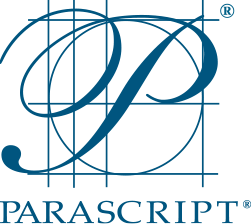The goal of every recognition engine is to produce the highest accuracy possible which is probably pretty obvious (who uses technology to get poor results?). But did you know that the type and quality of images being recognized can and often produces significantly different results, depending upon which recognition technology is used? For example, in […]
Document Recognition: Speed versus Accuracy
With any document recognition workflow, both speed and accuracy come into play when designing the process. Each has pros and cons requiring analysis to determine the best approach while defining document types, field recognition requirements and validation and verification workflows. In most cases, the tradeoff might not be obvious or apparent. Multiple factors affect speed […]
The Digital Age: Why OCR and ICR Are More Important Today Than Ever
Even with iPhones, iPads, and other digital devices, forms, applications, checks and documents are still widely used to collect data. While obtaining and leveraging this information from forms is a critical business differentiator, getting the data from documents continues to be a challenge, for many organizations, even in our digital age. OCR (or Optical Character […]
Image quality for document capture, is more DPI always better?
When setting up your scanner or mobile device for introduction to a recognition engine, either for machine print recognition (Optical Character Recognition – OCR) or handwriting recognition (Intelligent Character Recognition – ICR), is more DPI better? In the case of scanning images, there can be too much or too little. There is a point where […]
Pieces, parts or real solution? Features are features, but can you really use them?
In all types of software needs, businesses are often faced with the same challenge identifying the appropriate solution. Unfortunately this identification process is given short-shrift, often ending with a person from IT challenged with creating a list of potential solutions based upon a long laundry list of features or technical requirements. The reality of […]
Understanding OCR, ICR, and Parascript ICR
Over the years, recognition technology companies (including Parascript) have attempted to create acronyms to delineate the differences between OCR, ICR, and the technology needed to effectively read many types and styles of handwriting, including cursive. In the end, we havent run into anybody who asks about natural handwriting recognition and the such. People just ask […]
Infographic: 55% of forms data is being rekeyed — why?!
Last year, Parascript set out to measure the adoption of automated recognition of both Optical Character Recognition (OCR) and Intelligent Character Recognition (ICR) for processing forms. The results were astounding, especially the lack of organizations utilizing automated recognition. Only 32% of organizations surveyed are using OCR to extract document content. Over the last year, we […]
7 Reasons your Document May not be Suited for Unstructured OCR/ICR
Structured and semi-structured document analysis with ICR engines is complex enough; enter in an unstructured requirement with a data extraction workflow and you have a major challenge. When considering an unstructured approach, an analyst needs to determine if the project is a good candidate. The following 7 document characteristics present clues as to why your […]
Why context is essential in handwriting recognition
Context plays a significant role in the recognition process. When people read handwriting, they look at entire words or even the entire document to correctly identify what is written. They can read a sentence and understand illegible words within the context of the document. In the same way, recognition engines use context as […]
